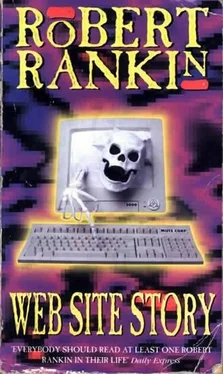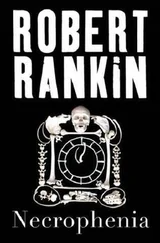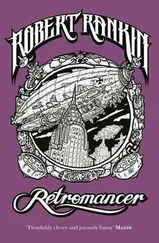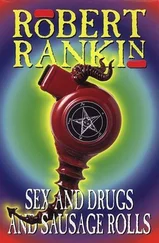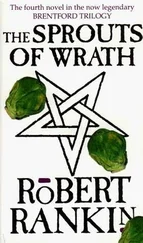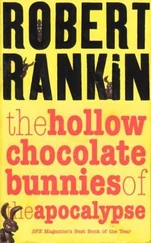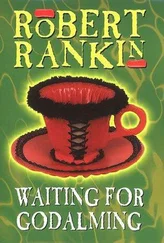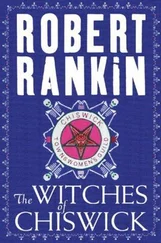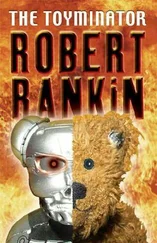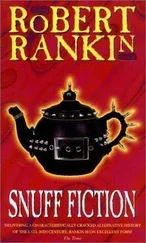Robert Rankin - Web Site Story
Здесь есть возможность читать онлайн «Robert Rankin - Web Site Story» весь текст электронной книги совершенно бесплатно (целиком полную версию без сокращений). В некоторых случаях можно слушать аудио, скачать через торрент в формате fb2 и присутствует краткое содержание. Жанр: Современная проза, на английском языке. Описание произведения, (предисловие) а так же отзывы посетителей доступны на портале библиотеки ЛибКат.
- Название:Web Site Story
- Автор:
- Жанр:
- Год:неизвестен
- ISBN:нет данных
- Рейтинг книги:3 / 5. Голосов: 1
-
Избранное:Добавить в избранное
- Отзывы:
-
Ваша оценка:
- 60
- 1
- 2
- 3
- 4
- 5
Web Site Story: краткое содержание, описание и аннотация
Предлагаем к чтению аннотацию, описание, краткое содержание или предисловие (зависит от того, что написал сам автор книги «Web Site Story»). Если вы не нашли необходимую информацию о книге — напишите в комментариях, мы постараемся отыскать её.
Web Site Story — читать онлайн бесплатно полную книгу (весь текст) целиком
Ниже представлен текст книги, разбитый по страницам. Система сохранения места последней прочитанной страницы, позволяет с удобством читать онлайн бесплатно книгу «Web Site Story», без необходимости каждый раз заново искать на чём Вы остановились. Поставьте закладку, и сможете в любой момент перейти на страницу, на которой закончили чтение.
Интервал:
Закладка:
'Are you sure about that?' asked the barman, as fists began to fly in all directions. 'I'm sure he's just Big Bob.'
'The Whore of Babylon, cross-dressed as a barman,' cried the bish. 'Destroy this one too, he bears the mark of the Beast on his wanger.'
'I bloody do not,' said the barman, dodging a flying pint pot. 'My wanger bears a small tattoo. You're pissed, get out of my bar.'
Outside in the car park two coaches drew up side by side. One contained the Brentford Constabulary darts-team eleven, lately returned from a humiliating hammering at the points and flights of the Chiswick Constabulary darts-team eleven, playing on their home turf.
The other contained the Brentford Firefighters hurling team, lately returned from a similarly humiliating trouncing at the pucks and sticks of the East Acton Brigade, playing on their home turf.
Both coaches contained downhearted men, in very poor spirits. Men who, only a day before, had engaged in conflict with one another, regarding who should be first on the scene and take overall control of the situation. That situation being a certain bus crash in Brentford High Street.
Both coaches disgorged their downhearted cargoes at the same moment. And the sounds of battle ensuing from within the Arts Centre and borne upon that gentle zephyr, which brought the scent of lilies and antique roses too across the Thames from the gardens of Kew, reached the ears of these downhearted cargoes at the selfsame moment.
And, being professional men, these downhearted cargoes pricked up their respective ears at the sounds of battle. And processed these sounds.
And reached a decision.
'We'll take charge of this,' said the firemen.
'No, I think we will,' the policemen said.
13
It had always been a matter for heated debate amongst scholars of human behaviour. 'What makes for a really classic punch-up?'
Certainly the ingredients have to be exactly correct. The margin of error is paper-dart slim. Too much of this, too little of that, and the whole thing goes to pot.
Hugo Rune, that scholar amongst scholars of human behaviour, that lecturer to the Royal Academy on subjects ranging from aquatics and teapot construction to the plea for the six-bar gate and the four-sided triangle, that four times WWF World Heavyweight Champ and no mean manipulator of the stout stick, stated in his famous monograph Come over 'ere if you fink yor 'ard enough or: What makes for a really classic punch-up? that four important factors play their equal parts.
These are,
One: Location.
Two: Even sidings of participants.
Three: A really good reason for having a punch-up.
Four: A safe vantage point for the scholar of human behaviour to view and study the ensuing melee.
Rune, according to his arch-detractor Koestler, was a vicious psychotic, who loved violence for the sake of violence and was responsible for starting numerous unseemly brawls during the 1920s and 30s, merely because it 'turned him on, sexually'. Notably the infamous Cafe Royal bash-about of 1927, where Rune incited a group of surrealists, including Salvador Dali and Max Ernst, to set about the waiters of that noble establishment, claiming that they were 'looking at him in a funny way'. And the scandalous Vatican canteen cardinal knee-kicking incident which ended with Pope Leo XVII receiving a black eye and Hugo Rune being excommunicated by the Church of Rome.
Rune claimed that Koestler had as usual got the wrong end of the stick, but would be receiving the heavy end of his famous stout one at their very next meeting.
It was Rune's conviction that a punch-up was a work of kinetic art, a martial art form. In fact a concerto for knuckles and things of that nature generally. To be enjoyed for its spontaneous anarchic brilliance, for its adrenalin excitation and not necessarily for the fact that it 'got him off’ when he went back to his girlfriend. 'The punch-up is a thing of beauty,' claimed Rune. 'It springs out of nowhere, rising like the rainbow's arc to add that extra touch of colour to our otherwise greyly-hued existences. Especially after a meal.' And it is certainly well recorded, by those he invited to dine, that once Rune had concluded his repast, drained his brandy balloon of fifty-year-old cognac and stubbed out the dying butt of his Napoleon, he would invariably yawn, gaze about the restaurant with a curious gleam in his eye, before suddenly leaping from his chair to shout something like, 'How dare you speak to me in that fashion, sir,' before striking some innocent diner about the head with his stick. The resultant melee, often bloody and oft-times resulting in numerous arrests, was inevitably notable for two things, the absence of Hugo Rune at its conclusion and his invited dinner guest, usually injured, being forced to pay the bill.
Rune claimed that he performed these acts not only in the cause of scientific and sociological enlightenment but also 'For Art', which made them acceptable, because he was the leading artist of his day. And when asked why, specifically, he had started off the knee-kicking incident in the Vatican canteen, he explained that he had already spent a month in Rome and was finding it hard to locate a restaurant that would accept a booking in his name.
It is now agreed, by those who have studied the life and works of Hugo Rune, that he was a man born before his time and that only now is science and sociology beginning to catch up with him. It is also quite interesting to note that the south-coast artist Matt Humphrey was recently shortlisted to win the Turner Prize with his piece punching people, a video film of him beating up Big Issue sellers who were attempting to ply their trade outside the Body Shop in Brighton. At his trial, Humphrey claimed that he was not the 'vicious psychotic who loved violence for the sake of violence' as the counsel for the prosecution claimed, but an Artist, with a capital A, paying homage to Hugo Rune. Humphrey walked free from the court, but an independent tribunal indicted Mr Justice Thumbs, who tried the case, claiming that as a practising Runie his judgement had been biased. Mr Justice Thumbs is currently serving a two-year sentence for setting about members of the tribunal with his stout stick.
So, in summing up the matter for the heated debate amongst scholars of human behaviour regarding what makes for a really classic punch-up, and bearing in mind Rune's four important factors, location, even sidings of participants, a really good reason for having a punch-up and the possibly questionable fourth, how might these be applied to the rip-roaring riot currently on the go in the bar of the Waterman's Arts Centre?
Good question.
Well, we certainly have a good location. Time and time again, the bar room has proved itself to be an excellent spot for a really decent bout of fisticuffs. There are chairs to break over people's heads, bottles, glasses and ashtrays to throw, and there are always folk ready and willing to participate, many eager and anxious, as if anticipating the arrival of such an event.
And as to the participants. Even sidings do make for a classic punch-up. This is an ultimate truth. Six onto one isn't a punch-up, it's a massacre. Six onto six and the fight could go either way. As to those presently wading in at Waterman's, there were no specific sides, other than for those of the lately arrived emergency services. But there was no ganging up. The fighting was evenly distributed. Poet fought with poet, muleskinner with muleskinner, and had there been more than one wandering bishop present, it is a certainty that they would have taken the opportunity to settle old but unforgotten scores and kick knees along with the best of them.
As to the really good reason for having the punch-up.
Читать дальшеИнтервал:
Закладка:
Похожие книги на «Web Site Story»
Представляем Вашему вниманию похожие книги на «Web Site Story» списком для выбора. Мы отобрали схожую по названию и смыслу литературу в надежде предоставить читателям больше вариантов отыскать новые, интересные, ещё непрочитанные произведения.
Обсуждение, отзывы о книге «Web Site Story» и просто собственные мнения читателей. Оставьте ваши комментарии, напишите, что Вы думаете о произведении, его смысле или главных героях. Укажите что конкретно понравилось, а что нет, и почему Вы так считаете.
